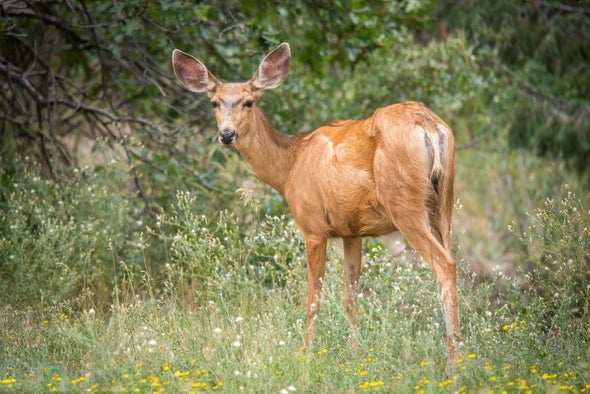This is Scientific American's 60-second Science, I'm Scott Hershberger.
Climate change is altering the migration routes of animals worldwide. Here's a look at new research on how two species have been affected.
First, mule deer. Every spring in Wyoming, vegetation first appears at lower altitudes before progressing up the mountainside. Migrating mule deer follow and forage on this green wave. But as a changing climate leads to more frequent and more severe droughts, the greenery is not as bountiful as it used to be.
For her Ph.D. research at the University of Wyoming, Ellen Aikens tracked mule deer as they surfed the green wave.
"The green-up lasted across the landscape for about half as long in drought years, in comparison to wet years. And also, the order of green-up along these routes were less sequential. So in essence, drought compresses and reshuffles the green wave and just makes it so that this foraging bonanza that deer depend on in their spring migration is really compressed in time."
And although the deer were able to keep up with the faster green wave, the nutritional value was lower—leaving the animals less prepared for the challenges of the year ahead.

Meanwhile in Europe, the population of Bewick's swans that spend the winter in the United Kingdom and the Netherlands is declining. But when researchers looked at the data more closely, they found an increase in the wintering population of swans in Germany. It turns out that since the 1970s, the swans' wintering habitat has shifted an average of 13 kilometers to the east each year.
"What we think is that the swans like to spend time in areas where it's five degrees Celsius. And this isotherm has shifted in the same rate as the swans shifted eastward. So that's a strong indication for us that the swans actually move with this temperature line."
Rascha Nuijten of the Netherlands Institute of Ecology. Her team also found that the swans were spending less time in their winter homes before flying back to the Russian tundra to breed.
Neither the mule deer nor the Bewick's swan is endangered, but the findings have broader importance for our understanding of the conservation of migratory animals.
"Because if you start thinking of protecting a certain plot of land, it's not just the current situation that is there. Nature is dynamic. And the species that are present now might not be present in 10 years' time—and not because we didn't protect it but maybe because these species are actually dynamic in their ways. And we need to include this resilience and the dynamics of nature into our legislation and management."
Thanks for listening for Scientific American's 60-second Science. I'm Scott Hershberger.











